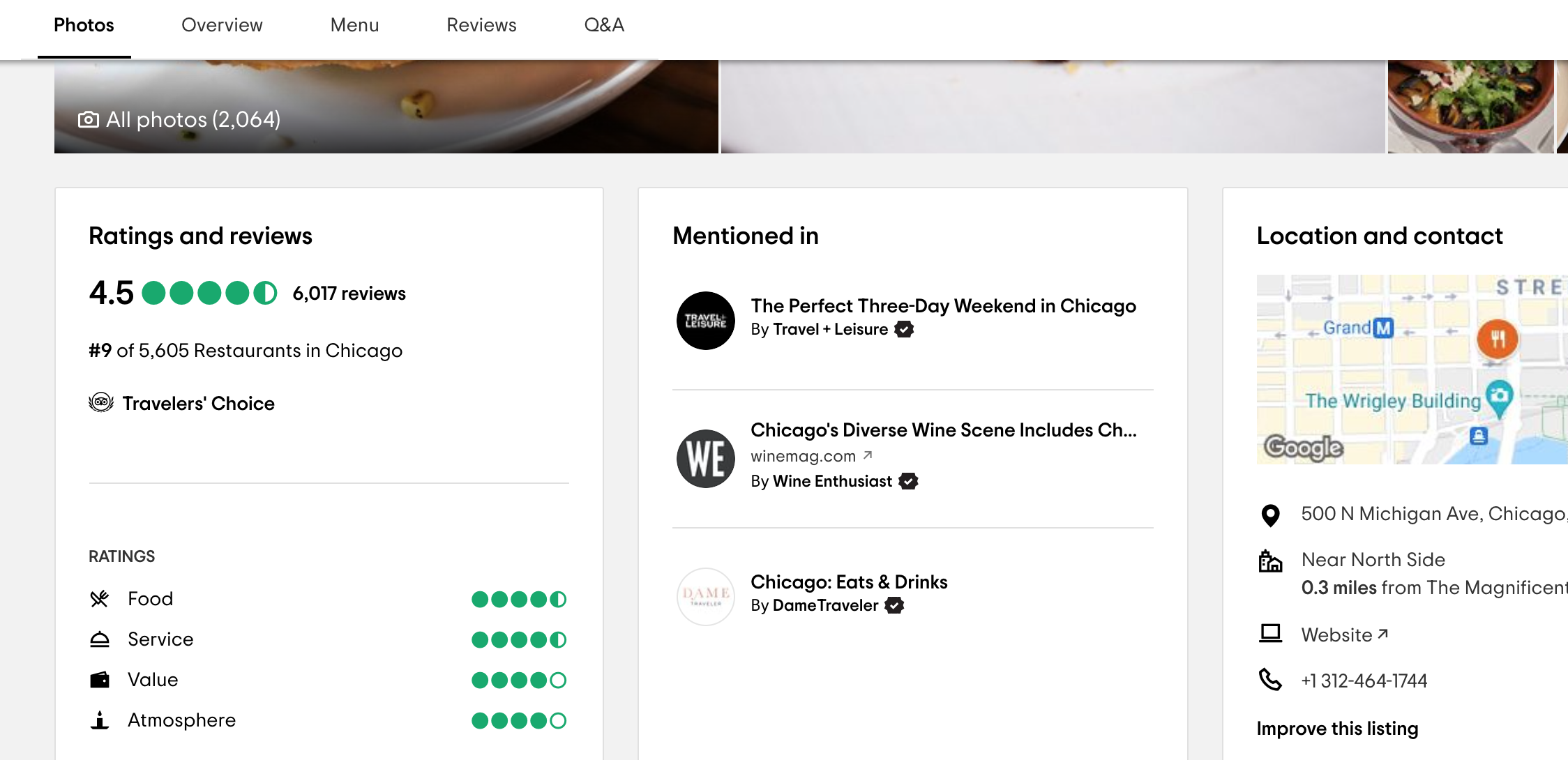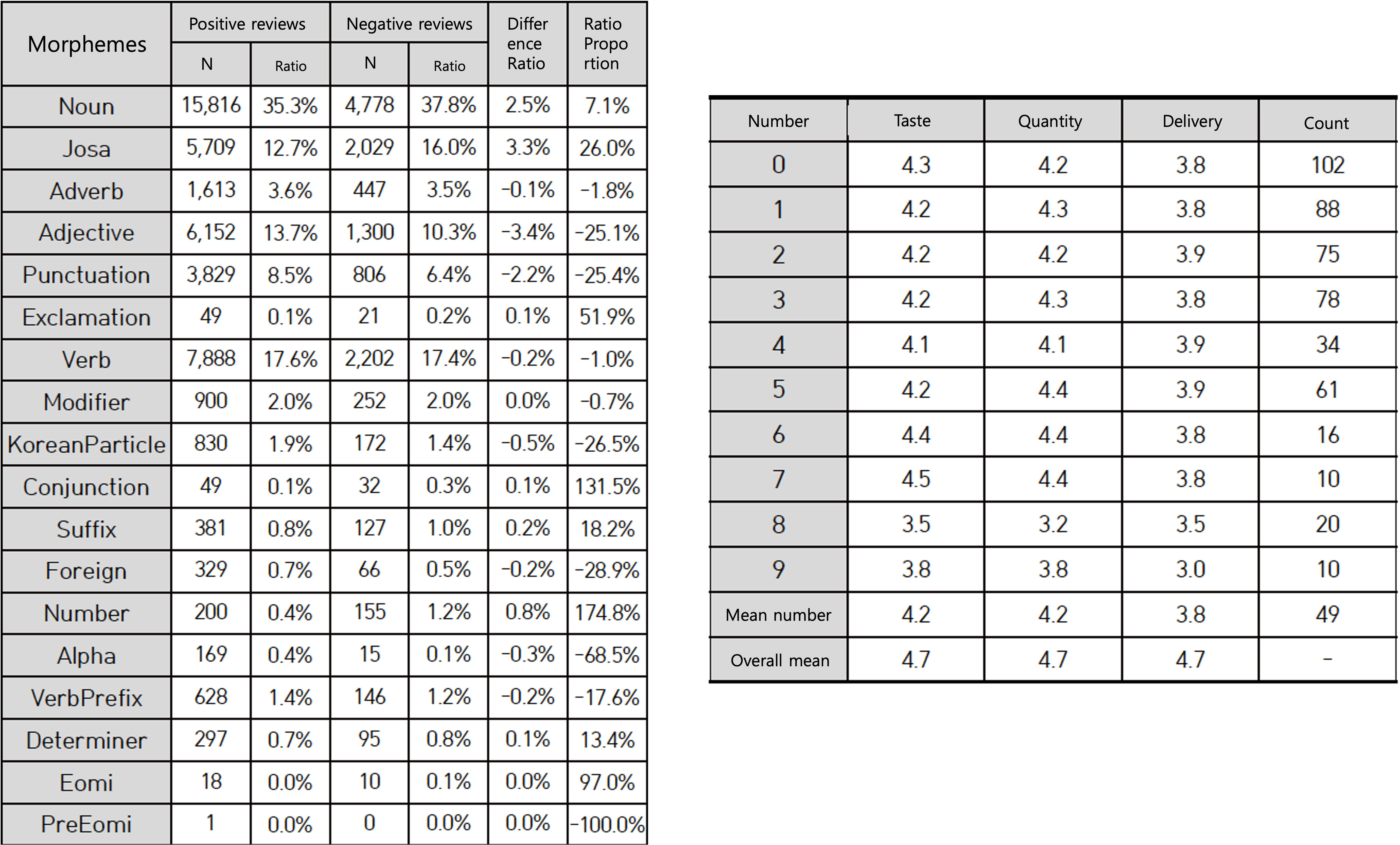Behind Chicken Reviews: Exploratory Analysis Through Text Mining
Burgeoning amount of reviews makes review credibility questionable; we asked whether we can trust its rating or not, and analyzed the reviews texts for more objective measures.

Burgeoning amount of reviews makes review credibility questionable; we asked whether we can trust its rating or not, and analyzed the reviews texts for more objective measures.

Delivery application reviews are burgeoning. Yet, little observation is conducted to analyze its credibility, content and trend. Using NLP and exploratory analysis, we observed the common traits of delivery app reviews and specifically those of chicken franchise brands.

Observing the 'lenient' ratings of the delivery application, we sought to use topic modeling to classify the fatal words to the business and created a negative word dictionary dedicated to chickn reviews.
A delivery app review analysis project
Web crawling, text mining, natural language processing, data visualization
Natural language processing, data analysis, empirical finding
Jugyeom Kim: text mining, exploratory analysis
Soohyun Yoon: data processing
Youbeen Lee: data
processing
Advisor: Dongwhan Kim
This study explores the texts in reviews and ratings of a delivery application and discovers
ways to elevate review credibility and usefulness.
Reviews are what influence us the most when it comes to decision making. However, as colossal amount of reviews are produced everyday and they are only increasing, it is getting more difficult to assess their credibility. Especially as the lengths of reviews are shortening and sheer reliance is on the rating as well, exploring the current review status of the food delivery app and opting for a more reliable way of understanding the polarity of the review is in grave need.
Reviews are vital both for the restaurant's improvement and also for objective deicision making for the consumers. However, for both parties, to glimpse through all reviews is demanding and also due to many factors, the reviews and ratings do not necessarily match as every customer has different standards and values they place the weight on. Previous attempts to empirically and objectively analyze and group the reviews are:
We sought to first, collect food deliery app review data via web crawling. Then, we analyzed the different ratings and reviews by comparing them with those of other platforms (google, naver). Then, KoNLpy is used as the natural language processing tool, to explored the different trends in the review data. Then, to analyze if there is a trend in the text morphemes themselves, we used OKT (Open Korean Text) processor to observe such trend.
| Methodology | Usage |
|---|---|
| Python Selenium | Web crawling of 5,000 review data/ Rating trend comparisons |
| KoNLPy | Korean natural language processing, standardization of data | Open Korean Text Processor | Observing part of speech and morpheme proportions |
We first observed the general rating systems and compared them with other review platforms. We then analyzed the factors involved in give the ratings. We also then analyzed the NLP results and identified unique grammatical traits in the sentences. Finally, we created a dictionary to easily identify the critical words to the business through topic modeling.
We have analyzed our observed data "Yogi** food delivery application had a fiver-star oriented rating dispersion compared to two other reivew platforms, when comparing the five franchise chicken brands and 65 stores. Such a result signifies that the review and rating has lower credibility in Yogi**, while others have more neutral rating dispersion, it meant that the delivery app had more lenient ratings compared to their real sentiments.
| Platform | Number of Stores | Number of Reviews | Mean Rating | Std. D |
|---|---|---|---|---|
| Yogi** | 65 | 61,693 | 4.67 | 0.169259 |
| Naver | 64 | 16,407 | 4.32 | 0.187963 | 89 | 1,574 | 3.72 | 0.859846 |
We then analyzed the inherent factors to influence its ratings and observe if there is a discrepancy between ratings and the review content. After factor analysis, it was excavated there was a positive correlation between the taste, quantity and delivery ratings, and that one is very important to one another, and that they altogether have a very strong relationship. This meant that if the delivery was late, the taste was deemed unsatisfactory.
| Taste | Quantity | Delivery | Mean Rating | |
|---|---|---|---|---|
| Taste | 1 | 0.713 | 0.568 | 0.883 |
| Quantity | 0.713 | 1 | 0.585 | 0.877 |
| Delivery | 0.568 | 0.585 | 1 | 0.835 | Mean Rating | 0.883 | 0.877 | 0.835 | 1 |
We conducted general exploration and analysis on the grammatical parts of the sentences, and observed a speciifc trend in the moprhemes and parts of speech that comprised the negative and positive reviews. We discovered certain parts of speech and its frequency indicated negative content, and that numbers could mean severely negative reviews.

Finally, based on the polarity identification, we have created a negative word dictionary of which is chicken-review specialized, under four main topics and 20 sub-topic classifications after extracting a total of 367 negative words.

Although we had focused primarily on one delivery app and one type of food, fried chicken (because we all love it), we analyzed if there was a discrepancy between the ratings and reviews, and it turns out many customers rate the restaurant higher than they actually think, provided their review content was analyzed. In the flood of reviews, we hoped that provide a negative word dictionary based on sentimental polarity analysis and provide indicators for both the owners and customers about the polarity of the reviews. We also identified certain parts of speech and the presence of numbers could provide negative connotations. We hope that this approach to explore the delivery review data can assist so many parties involved in the delivery app culture, that is basically bombarded every day due to its popularity.
Following article is published in the Journal of Korea Contents Association, "BEHIND CHICKEN
RATINGS: An Exploratory Analysis of Yogiyo Reviews Through Text Mining"
https://doi.org/10.5392/JKCA.2021.21.11. Abstract and some pages that are in English can be seen
below:
Please find the full paper below: